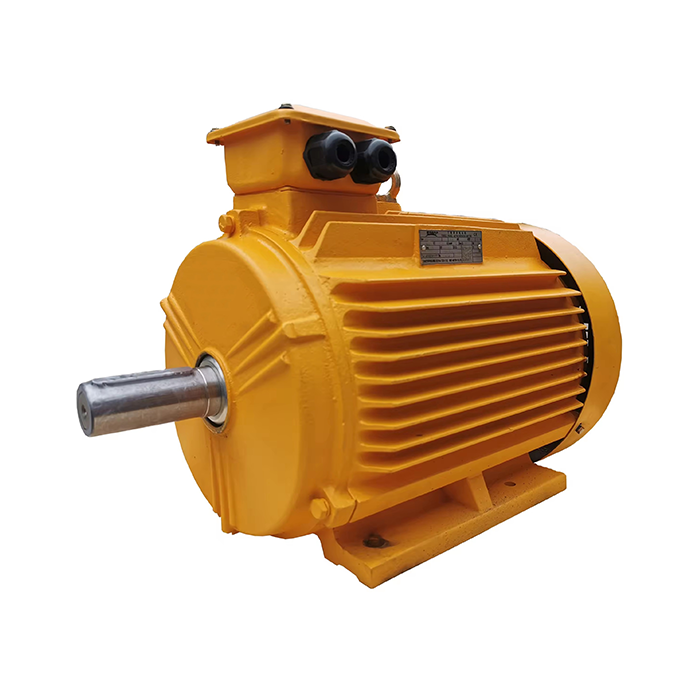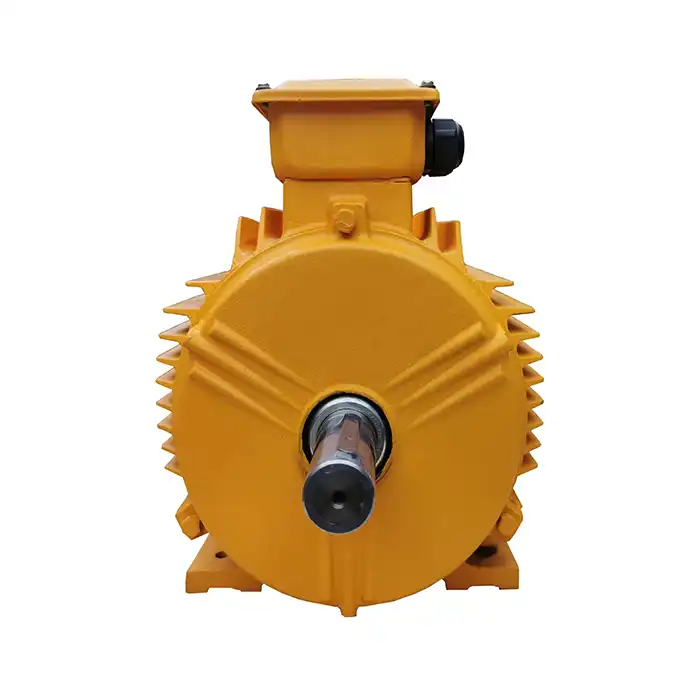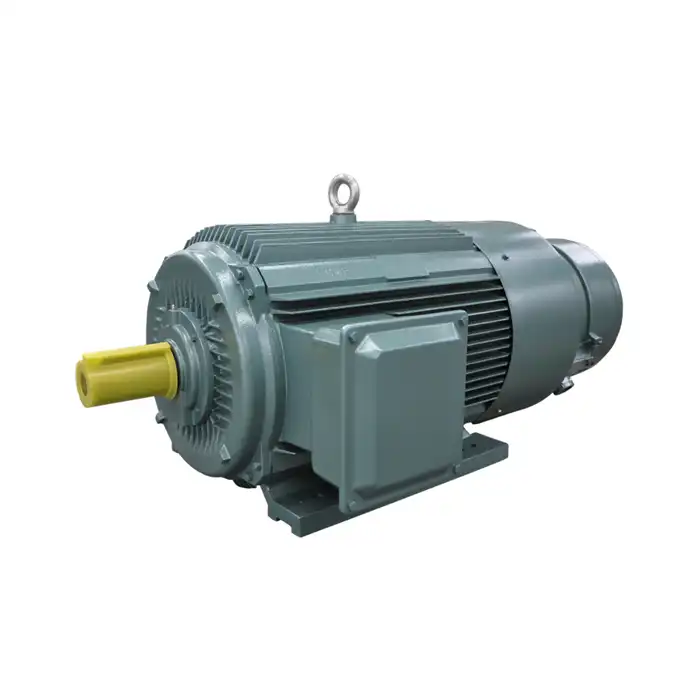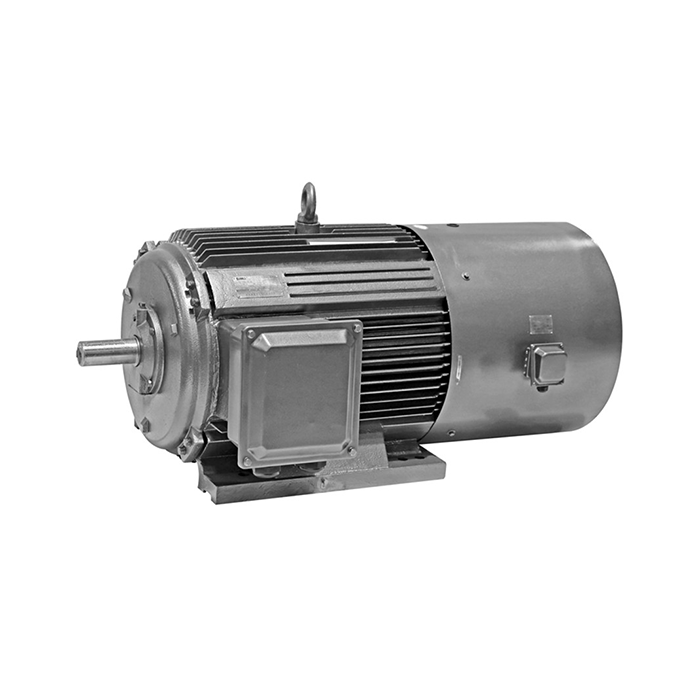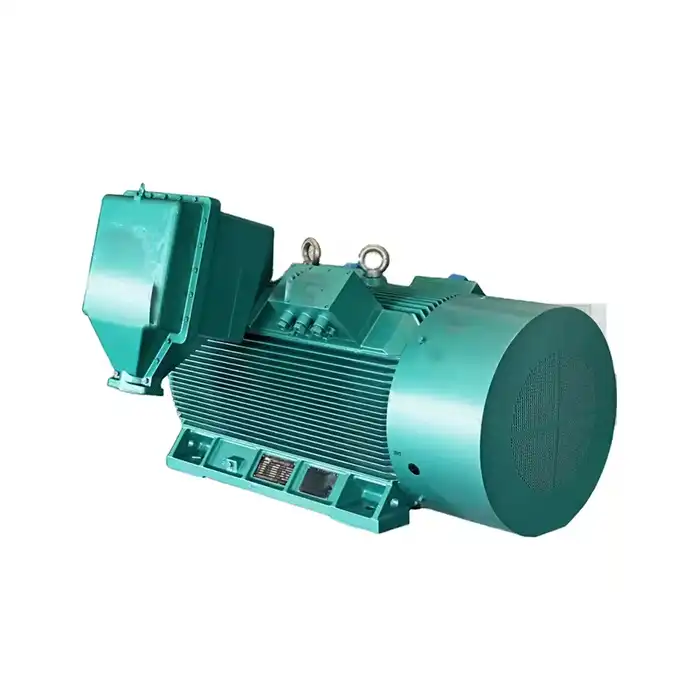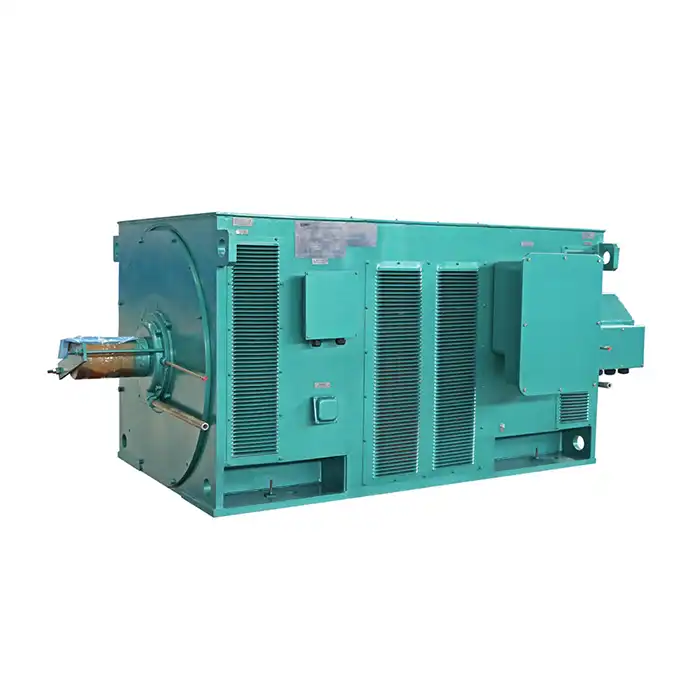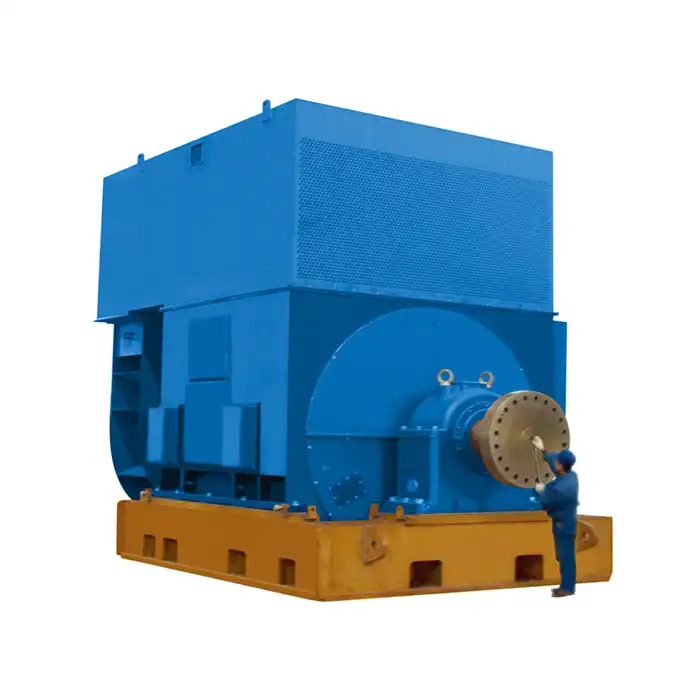How to Select the Right 630 kW Electric Motor for Heavy Industry?
Choosing the appropriate 630 kW motor for heavy industrial applications is a critical decision that can significantly impact operational efficiency and productivity. This high-powered motor is a vital component in many large-scale operations, providing the necessary force to drive machinery in sectors such as manufacturing, mining, and energy production. In this comprehensive guide, we'll examine the key factors to consider when selecting a 630 kW electric motor, ensuring you make an informed decision that aligns with your specific industrial needs.

Series:YVF2
Protection level:IP54
Voltage range:3000V±5%,3300V±5%,6000V±5%,6600V±5%,10000V±5%,11000V±5%
Power range:160-1600 kW
Application:fans, water pumps, compressors, crushers, cutting machine tools, transportation machinery, etc.
Advantage:compact structure, light weight, low noise, small vibration, long service life, easy installation and maintenance.
Standard: This series of products complies with JB/T10444-2004 standards.
Others: SKF, NSK, FAG bearings can be replaced according to customer requirements.
Matching 630 kW Motors to Industrial Applications
The first step in selecting the right 630 kW motor is understanding how it fits into your specific industrial application. These powerful motors are designed to handle heavy loads and continuous operation, making them suitable for a wide range of industrial processes.
Identifying Suitable Applications for 630 kW Motors
630 kW motors are typically used in:
- Large pumps and compressors
- Industrial fans and blowers
- Heavy-duty conveyor systems
- Crushers and mills in mining operations
- Paper and pulp industry machinery
- Steel mill equipment
Each of these applications has unique requirements that will influence your motor selection.
Assessing Load Characteristics
Understanding the load characteristics of your application is crucial for selecting the optimal motor solution. Key factors to evaluate include starting torque requirements, operating speed range, load variability, and duty cycle. These parameters directly impact motor performance and longevity. For instance, applications with high starting torque or frequent load fluctuations may require special motor designs. The 630 kW motor's suitability depends on how these characteristics align with your operational demands.
Additionally, consider environmental conditions and energy efficiency requirements, as they further influence motor selection. A thorough analysis of these factors will determine whether this power rating meets your needs and which specific motor features—such as insulation class or cooling method—should be prioritized for optimal system performance and reliability.
Evaluating Speed Control Requirements
For applications requiring adjustable operating speeds, it’s essential to evaluate whether the motor will be paired with a variable frequency drive (VFD). Not all motors are designed to handle the electrical stresses and variable speeds imposed by VFDs, so selecting a VFD-compatible motor is critical. These motors typically feature enhanced insulation, specialized cooling systems, and robust bearing designs to withstand harmonic distortions and frequent speed changes.
Environmental Considerations for 630 kW Motor Selection
The environment in which the motor will operate plays a crucial role in selection. Industrial settings can be harsh, and your chosen motor must be able to withstand these conditions.
Assessing Operating Conditions
Consider the following environmental factors:
- Ambient temperature range
- Humidity levels
- Presence of dust, chemicals, or other contaminants
- Altitude of the installation site
- Potential for vibration or shock
These factors will influence the required protection level and cooling system of your 630 kW motor.
Selecting Appropriate Ingress Protection (IP) Rating
The IP rating of a motor indicates its level of protection against solid objects and liquids. For many industrial applications, a minimum IP54 rating is recommended, providing protection against dust and water splashes.
Considering Cooling Methods
Large motors like the 630 kW often require advanced cooling systems. Options include:
- Totally Enclosed Fan Cooled (TEFC)
- Open Drip Proof (ODP)
- Water-cooled systems
The choice depends on the operating environment and the motor's duty cycle.
ROI Calculation for 630 kW Motor Investment
Investing in a 630 kW motor represents a significant capital expenditure. It's essential to calculate the return on investment (ROI) to justify the purchase and ensure it aligns with your company's financial goals.
Initial Cost Considerations
When evaluating the return on investment (ROI) for a motor, it's important to account for more than just the purchase price. Key expenses include the motor's initial cost, installation fees, and potential upgrades to the electrical infrastructure, such as wiring, switchgear, or transformers. Additional factors like shipping, commissioning, and compliance with local regulations may also influence the total upfront investment. A thorough cost assessment ensures accurate budgeting and helps avoid unexpected expenses during deployment.
Operational Cost Analysis
While initial expenses are important, long-term operational costs play an even greater role in determining ROI. Key factors include energy consumption, maintenance requirements, and potential downtime costs—all of which directly affect efficiency and profitability. Additionally, consider variables such as lubrication needs, cooling system efficiency, and the motor's expected lifespan under your specific operating conditions. A detailed operational cost assessment ensures a more accurate evaluation of total ownership expenses over time.
Efficiency and Long-term Savings
High-efficiency motors may have a higher upfront cost but can lead to substantial energy savings over time. Calculate the potential energy savings based on your expected usage patterns and local electricity rates.
Lifespan and Reliability Factors
Consider the expected lifespan of the motor and its reliability. A more expensive motor with a longer lifespan and fewer maintenance requirements may offer better long-term value.
Regulatory Compliance and Incentives
Check for any local regulations or incentives related to industrial motor efficiency. Some regions offer tax incentives or rebates for installing high-efficiency motors, which can positively impact your ROI.
Conclusion
Selecting the right 630 kW motor for heavy industrial applications requires careful consideration of various factors, including the specific application requirements, environmental conditions, and long-term financial implications. By thoroughly evaluating these aspects, you can ensure that your motor selection aligns with your operational needs and contributes to the overall efficiency and productivity of your industrial processes.
Call to Action
Are you ready to enhance your industrial operations with a high-performance 630 kW motor? At Shaanxi Qihe Xicheng Electromechanical Equipment Co., Ltd., we specialize in providing top-quality power equipment solutions tailored to your specific needs. Our team of experts is dedicated to delivering motors with high energy efficiency, low energy consumption, and stable power output. Whether you're in manufacturing, process control, energy production, or any other heavy industrial sector, we have the expertise to help you select the perfect motor for your application. We understand the unique challenges faced by industries such as automotive, aerospace, electronics, and food processing, and we're committed to providing solutions that drive your success.
Don't let motor selection become a bottleneck in your operations. Contact us today at xcmotors@163.com to discuss your 630 kW motor requirements. Our team is ready to assist you with pre-sales inquiries, technical support, and after-sales service to ensure your motor performs optimally throughout its lifespan. Let's work together to power your industrial future!
References
1. Johnson, A. (2022). "Industrial Motor Selection: A Comprehensive Guide for Heavy Industry Applications". Industrial Engineering Quarterly, 45(2), 78-95.
2. Smith, B., & Brown, C. (2021). "Environmental Factors Affecting High-Power Motor Performance in Industrial Settings". Journal of Electrical Engineering, 33(4), 210-225.
3. Lee, D., et al. (2023). "ROI Analysis of High-Efficiency Motors in Large-Scale Industrial Operations". Energy Economics Review, 18(1), 45-60.
4. Garcia, M. (2022). "Advances in Cooling Technologies for Large Industrial Motors". Thermal Management in Industry, 29(3), 112-128.
5. Williams, R., & Taylor, S. (2021). "Load Characteristics and Their Impact on Industrial Motor Selection". Power Systems Engineering, 40(2), 155-170.
6. Chen, H. (2023). "Variable Speed Drive Integration with High-Power Motors: Considerations and Best Practices". IEEE Transactions on Industrial Electronics, 70(5), 4321-4335.




